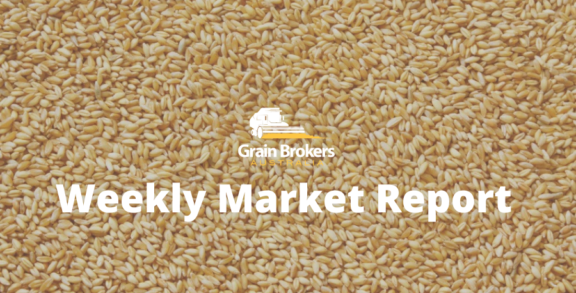The Indonesian government revealed plans on Thursday January 27 to limit palm oil exports by mandating a minimum proportion of production that producers must sell locally in a bid to curtail a dramatic rise in domestic cooking oil prices in the last year. The move pushed Malaysian palm oil futures to an all-time high and has turned the cheapest vegetable oil into the priciest among the three major edible oils traded across the globe.
Palm oil comes from the fruit of oil palm trees and is the most widely consumed vegetable oil on the planet. It is ubiquitous in our lives, being found in almost 50 per cent of the packaged products on our supermarket shelves. It makes ice cream creamier, holds the colour in lipstick, makes soap lather and shampoo foamy and makes ramen noodles cook evenly. It is a component of toothpaste, detergent and deodorant and is found in foods such as pizza dough, chocolate, cookies and margarine. It is also used in stockfeed rations and biofuel in many parts of the world.
Indonesia is the world’s top producer and exporter of palm oil, and along with Malaysia, account for 85 per cent of the global palm oil supply. According to the USDA’s Foreign Agricultural Service (FAS), Indonesian production in the 2020/21 marketing year (October ’20 to September ’21) came in at 43 million metric tonne, with shipments for the same period totalling 26.9MMT.
Although the periods are not quite aligned, local industry group Gabungan Pengusaha Kelapa Sawit Indonesia (GAPKI) had production in the 2021 calendar year much higher at 46.89MMT, despite a fall in output in the second half of the year due to the high cost, and lack of supply, of fertilizers. GAPKI also had exports markedly higher at 34.23MMT in 2021, around 39 per cent of world trade.
In an announcement last Friday, GAPKI said it expects 2022 production to increase by 4.5 per cent to 49MMT and exports to fall by three per cent to 33.21MMT on the back of increased local demand. However, it I not clear if that considers the government’s latest export restrictions.
According to the national weather agency, the current La Niña event is likely to bring in higher than average rainfall through to the end of this month. The higher precipitation levels are expected to improve yields, especially in areas where inputs such as fertilizer are applied.
GAPKI expects domestic demand to reach 20.59MMT this year, up from 18.42MMT last year. Food and biodiesel are the two biggest uses for palm oil in Indonesia. FAS are forecasting industrial use of palm oil to jump by more than 9 per cent to 9.6MMT in the 2021/22 marketing year, primarily driven by the increased biodiesel demand. The Widodo government plans to set its mandatory biodiesel allocations at 10.1 billion litres and maintain its fuel blending rate at 30 per cent.
A so-called Domestic Market Obligation (DMO) will be immediately applied to all Indonesian palm oil producers, compelling them to sell a minimum of 20 per cent of their planned exports into the domestic market. In addition, the government has stipulated that the maximum price attainable for those sales is 9,300 rupiah (AU$0.92) per kilogram. While the move was widely anticipated, the market had been factoring in a 25 per cent mandate, as the government attempts to bring down domestic cooking oil prices, which have risen by more than 40 per cent in the last 12 months.
The new restrictions come just two days after implementing a new rule for the first half of 2022, requiring exporters to declare how much crude palm oil they have sold, or plan to sell, into the domestic market to obtain export permits. The exporters must also show their sales contracts, including their export and domestic selling plans, for the ensuing six months. This new rule applies to all palm oil exporters, including those that have never supplied domestic markets before and are not affiliated with cooking oil manufacturers.
China overtook India as Indonesia’s largest palm oil export destination in 2020/21, and the trend is expected to continue in the current marketing year. Shipments to India, the world’s largest edible oil importer, declined 27 per cent to 3.6MMT on the back of higher Indonesian export duties, COVID-19-related demand challenges, and India’s swing to Malaysia as a key supplier. On the other hand, exports to China increased by 28 per cent to 4.8MMT, primarily due to increased demand from the Chinese food processing sector, such as the instant noodle industry.
Crude palm oil was reportedly being offered last week at around US$1,500/MT, including cost, insurance and freight (CIF), for February shipment into India. This compares to US$1,490/MT for crude soybean oil and US$1,460 for crude sunflower oil. Twelve months ago, palm oil was trading at a discount of around US$250/MT and US$100/MT to sunflower oil and soybean oil, respectively, forcing consumers to switch to the cheaper, higher quality alternatives.
The April palm oil contract on the Bursa Malaysia Derivatives Exchange added 2.1 per cent on the day of the announcement to finish at 5,444 ringgit (AU$1,860) per metric tonne. The contract gained as much as 3.17 per cent in intraday trade to hit an all-time high of 5,500 ringgit (AU$1,879)/MT before retreating slightly into the close. The rally continued on Friday, with the contract setting another record high of 5,639 ringgit (AU$1.926)/MT just prior to the close before settling the week at 5,628 ringgit (AU$1,922)/MT.
The contract has been on a sustained rally since closing at 4,101 ringgit (AU$1,401)/MT on December 15. Since then, there have only been seven down sessions, and the contract has risen 37.2 per cent or 1,527 ringgit (AU$)/MT. The price of palm oil is affected by price movements in related oils such as soybean oil, sunflower oil and canola oil as they compete for a share in the global vegetable oils market. The price of crude oil also has an impact as biofuels produced from vegetable oils are an almost perfect substitute for fossil fuels.
The higher prices will undoubtedly lead to some destruction of palm oil demand across the globe. However, the world is not swimming in surplus soybean oil and sunflower oil supplies. It will be interesting to see how the soybean crushers in Argentina and Brazil and the sunflower crushers in Ukraine and Russia react to the rapidly changing market dynamics. Not to mention the edible oil price reaction in global export markets.
Call your local Grain Brokers Australia representative on 1300 946 544 to discuss your grain marketing needs.





